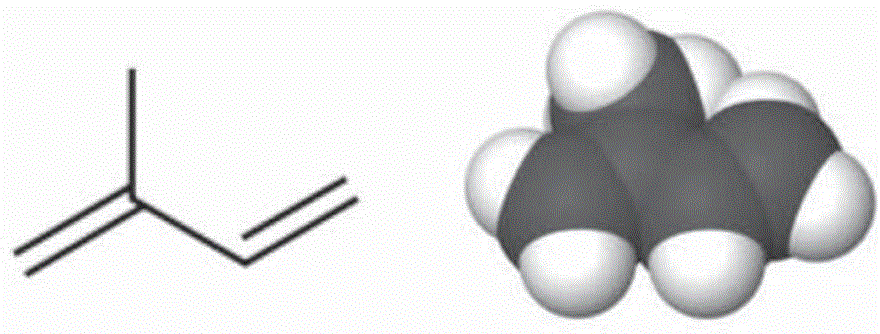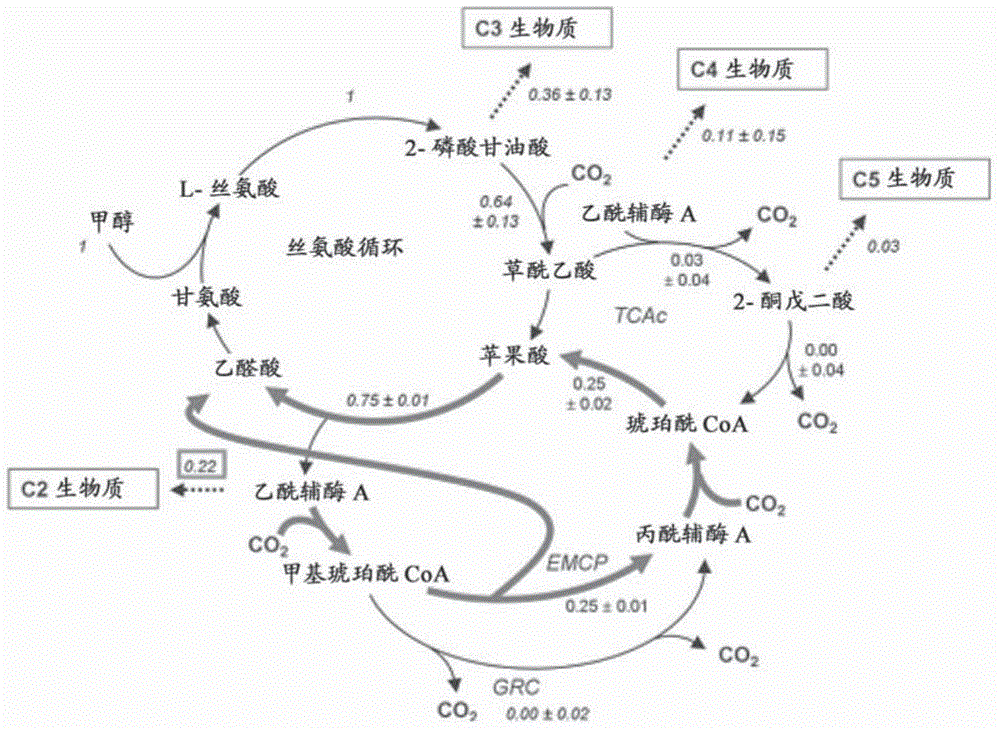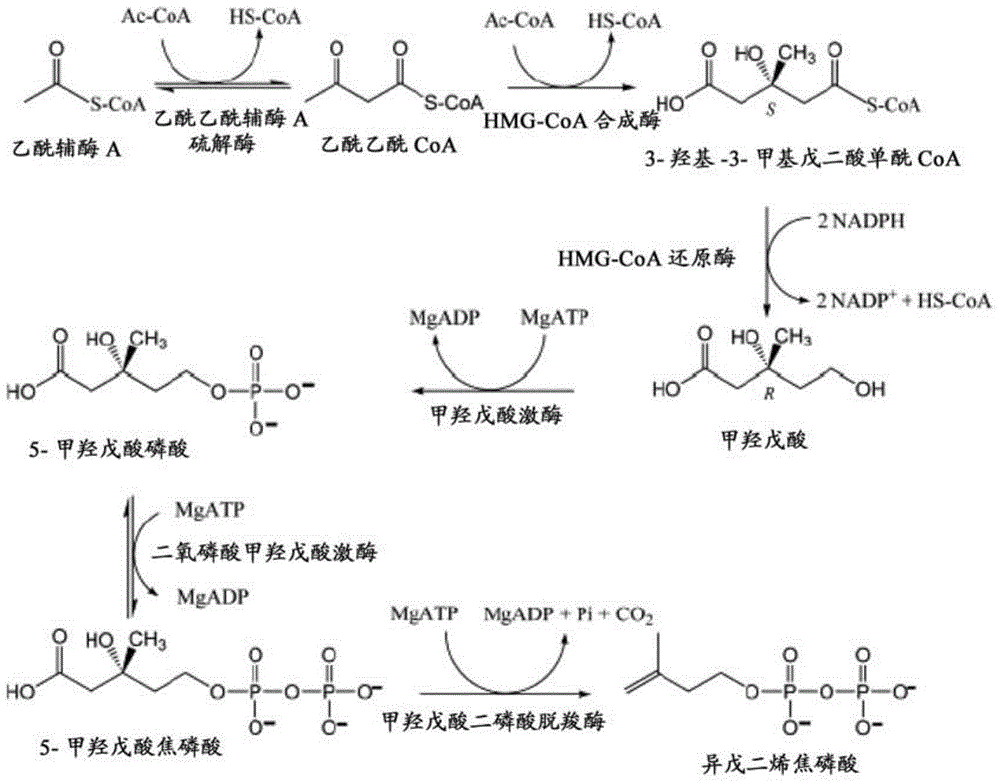Isoprene producing bacterial and isoprene producing method
A technology of prenyl diphosphate and isoprene, applied in the direction of microorganism-based methods, biochemical equipment and methods, botany equipment and methods, etc., can solve the problems of expensive glucose, biomass raw material supply and price Volatility and other issues
- Summary
- Abstract
- Description
- Claims
- Application Information
AI Technical Summary
Problems solved by technology
Method used
Image
Examples
Embodiment 1
[0188] Example 1 Expression of isoprene synthase (IspS) in M.extorquens AM1
[0189] The selected isoprene synthase should have higher enzymatic activity after expression in the Methylobacterium strain, so as to ensure high utilization rate of DMAPP and high yield of isoprene. At present, there is no precedent for expressing isoprene synthase in Methylobacterium bacteria, but there is a precedent for heterologous expression of part of isoprene synthase in Escherichia coli and measurement of its enzyme activity. The results of all enzyme activities known so far are shown in the table below:
[0190] Table 4 Enzyme activity of each species of isoprene synthase (IspS) when expressed heterologously in Escherichia coli
[0191]
[0192] In a comparable range, it can be seen that the isoprene synthase of Populus alba has the highest enzyme activity when expressed heterologously in Escherichia coli. Therefore, the isoprene synthase (IspS) of Populus alba was chosen...
Embodiment 2
[0200] Example 2 Expression of isoprene synthase (IspS) and isoprene in M. extorquens AM1 diphosphate isomerase (IDI)
[0201] Isopentenyl diphosphate isomerase (IDI) can convert IPP into DMAPP, the precursor of isoprene. In order to ensure that isoprene synthase can obtain sufficient substrate supply, IDI enzyme is introduced from an exogenous source. . Select the IDI enzyme derived from Escherichia coli str.K-12substr.MG1655, and use the same method as (1) to optimize the codon of the IDI enzyme gene to obtain the IDI enzyme gene that is conducive to the expression in AM1.
[0202] SacI restriction site (5'-3'GAGCTC)+IDI gene+RBS(pCM110)+MIspS gene+KpnI restriction site (5'-3'GGTACC) operon gene was chemically synthesized in Shanghai Sangon Bioengineering Company fragment. The synthesized fragment and plasmid pCM110 were double-enzyme-digested with SacI and KpnI enzymes. After purification, they were ligated with ligase to obtain plasmid pIDI&MIspS. The plasmid...
Embodiment 3
[0204] Example 3 Expression in M.extorquens AM1 HMGS+HMGR+MK+PMK+MPD+IspS
[0205] As mentioned above, the metabolic pathway from acetyl-CoA to isoprene involves six enzymes of the mevalonate pathway, isopentenyl diphosphate isomerase (IDI) and isoprene synthase ( IspS) total eight enzymes, because there are acetoacetyl CoA thiolase gene and isopentenyl diphosphate isomerase gene (IDI) in the Methylobacterium bacterium itself in this paper, so introduce remaining six enzymes, can The pathway for the production of isoprene by the MEV pathway was constructed. In this example, the enzymes HMGS and HMGR of the upper mevalonate pathway of E.faecalis and the lower mevalonate pathway MK of Streptococcus pneumoniae (S.pneumoniae) were selected under the same conditions. , PMK, MPD enzymes, combined with isoprene synthase of poplar (P. canescens), constitute the isoprene synthesis pathway to be introduced. The basic information of these 6 genes is listed in Table 6 below. ...
PUM
 Login to View More
Login to View More Abstract
Description
Claims
Application Information
 Login to View More
Login to View More - R&D
- Intellectual Property
- Life Sciences
- Materials
- Tech Scout
- Unparalleled Data Quality
- Higher Quality Content
- 60% Fewer Hallucinations
Browse by: Latest US Patents, China's latest patents, Technical Efficacy Thesaurus, Application Domain, Technology Topic, Popular Technical Reports.
© 2025 PatSnap. All rights reserved.Legal|Privacy policy|Modern Slavery Act Transparency Statement|Sitemap|About US| Contact US: help@patsnap.com



